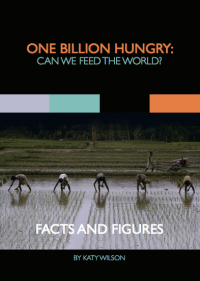 Two new reports out this week urge greater integration of fish in achieving food and nutrition security and sustainable food systems.
Two new reports out this week urge greater integration of fish in achieving food and nutrition security and sustainable food systems.
The World Resources Institute in their fifth instalment of the soon to be released World Resources Report, partnered with WorldFish, the World Bank, INRA, and Kasetsart University to explore how aquaculture can grow sustainably, reducing its environmental impact and contributing to food and nutrition security.
Aquaculture is a rapidly growing industry and production between 2000 and 2012 more than doubled. Aquaculture output is growing at 6.6% per cent per annum worldwide. As wild catch fish stocks decline, peaking in the 1990s, aquaculture becomes ever more important for meeting demands for fish, which contribute one sixth of animal protein consumed across the globe. To meet future demand it’s estimated that aquaculture production will have to increase by over 100% by 2050.
Aquaculture has been linked with some serious environmental concerns particularly for high-input high-output intensive systems – the eutrophication of lakes and transformation of species assemblages on the seabed as a result of nutrient enrichment; the physical degradation and clearing of coastal habitats such as mangroves for shrimp aquaculture; the introduction of non-native species to natural ecosystems; and the salinisation of drinking water resources, for example. Already large-scale improvements to the aquaculture sector are taking place: increasing resource-use efficiency, mangrove conversion is largely being prevented and the share of fishmeal and fish oil in feeds is declining, putting less pressure on wild fish resources.
Without appropriate management of these systems, however, the intensification of aquaculture, as wild fish stocks decline and demand for fish increases, could also intensify these environmental impacts. Sustainable intensification is called for, in the case of aquaculture defined as: advancing socio-economic development; providing safe, nutritious food; increasing the production of fish relative to the amount of land, water, feed, and energy used; and minimising water pollution, fish diseases, and escapes. The WRI paper explores various scenarios of aquaculture growth to 2050 to investigate whether the sector’s development can be sustainable. They find that under most scenarios environmental impacts, such as greenhouse gas emissions, are increased. The report recommends five approaches to transforming the aquaculture sector, increasing production while reducing its impacts: [Read more…]









